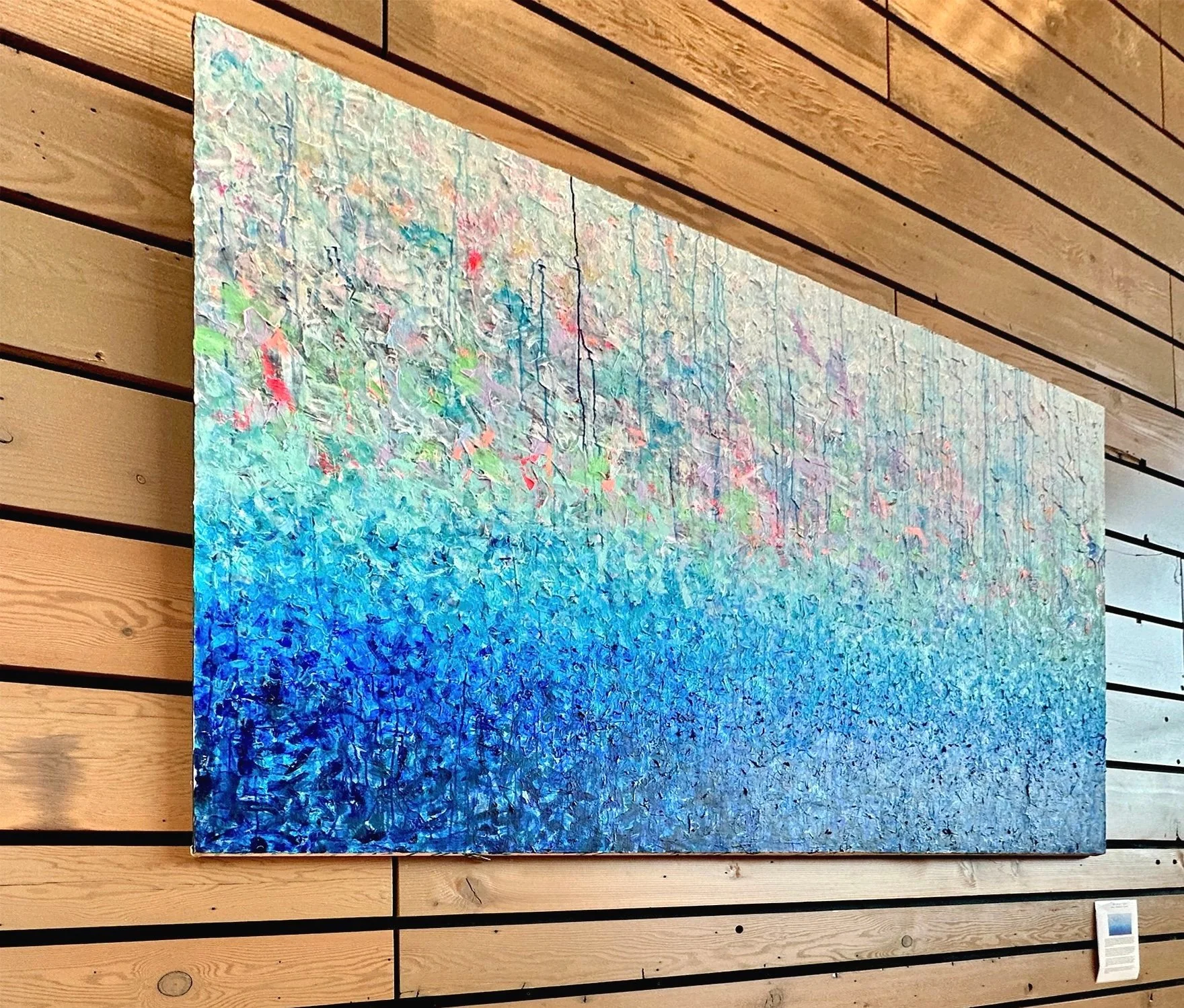Pallas Athena • 60x96"
Pallas Athena • 60x96"
Dimensions: 96”H x 60”W x 1.5”D
Medium: Acrylic on gallery wrap canvas
Price: $15,000
Additional Info: Sides of canvas are painted • Original, one-of-a-kind painting • No reproductions or prints
About the Artwork: Pallas Athena is about the Greek goddess, Athena, and the death of her friend, Pallas. A motherless child and the daughter of Zeus, Athena came into the world alone yet fully formed, armed, and ready to fight. She was raised by the sea god Triton on the art of war alongside his own daughter, Pallas, a water nymph, and fierce friend to Athena.
In one version of the myth, Zeus watches on as Pallas and Athena engage in a friendly sparring match. Fueled by competitiveness when he sees his orphaned daughter falter, Zeus intervenes and distracts Pallas with his shield. As the sea maiden falters, Athena’s sword pierces her dear friend’s heart. Instead of blood, water flows from Pallas’ wound - as later did the tears of Athena - and Pallas melts into water at Athena’s feet.
Grieving for her friend, Athena thereafter becomes known as “Pallas Athena” to honor her slain companion and perhaps as a reminder that the spoils of war always come at a cost.
I was drawn to this and other stories about Athena because of the contradictions she embraces. Athena is a warrior in a culture where women didn’t go to war; she is as skilled at weaving tapestries as she is at slaying men. She is a lover and mother to no one and a goddess for everyone. She has been called the goddess of nearness because she was always beside the Greek heroes in battle, guiding their spears and swords.
The opposing themes of life and death, victory and defeat, and love and betrayal that are at the crux of this story are represented by the many thin layers of soft, loose brushwork and the hard edges of texture made with palette knives. The painting incorporates subtle highlights of pink, red, and other “feminine” colors to hint at the story’s protagonist, yet varying shades of blue dominate the palette and remain stylistically fluid to allude to the transitory properties of water and the ever-changing nature of relationships illustrated in this myth.









